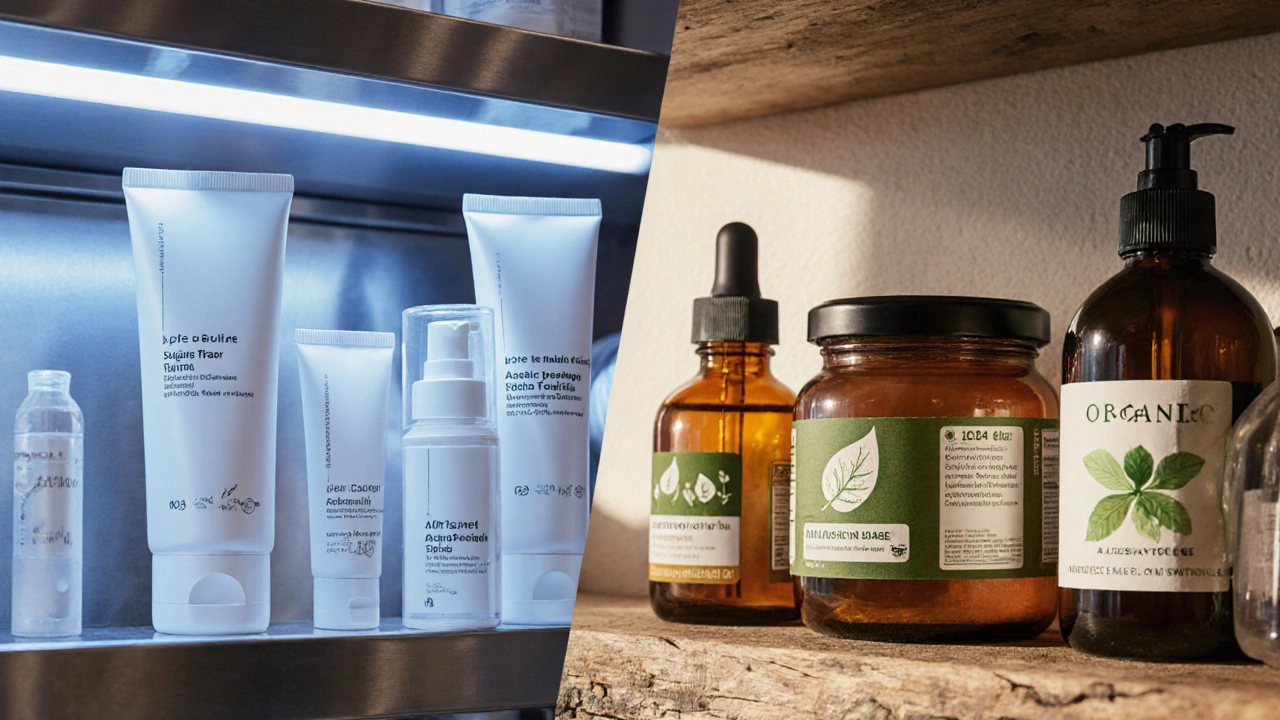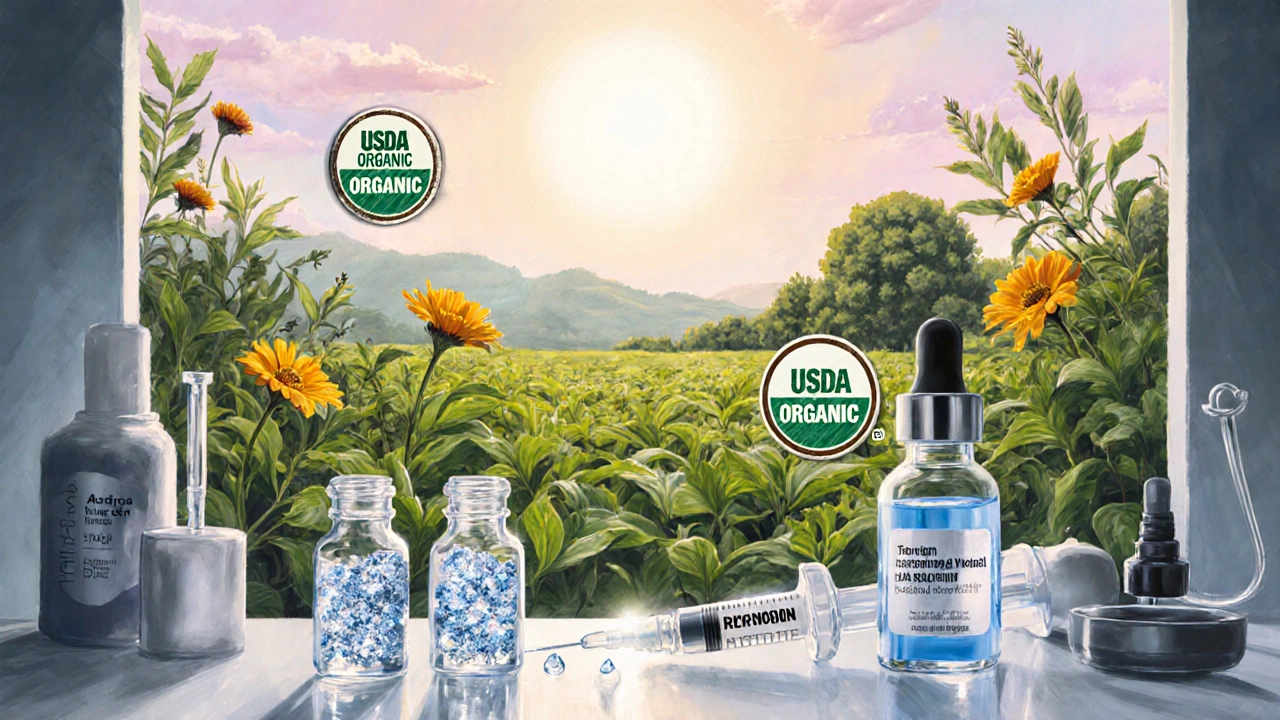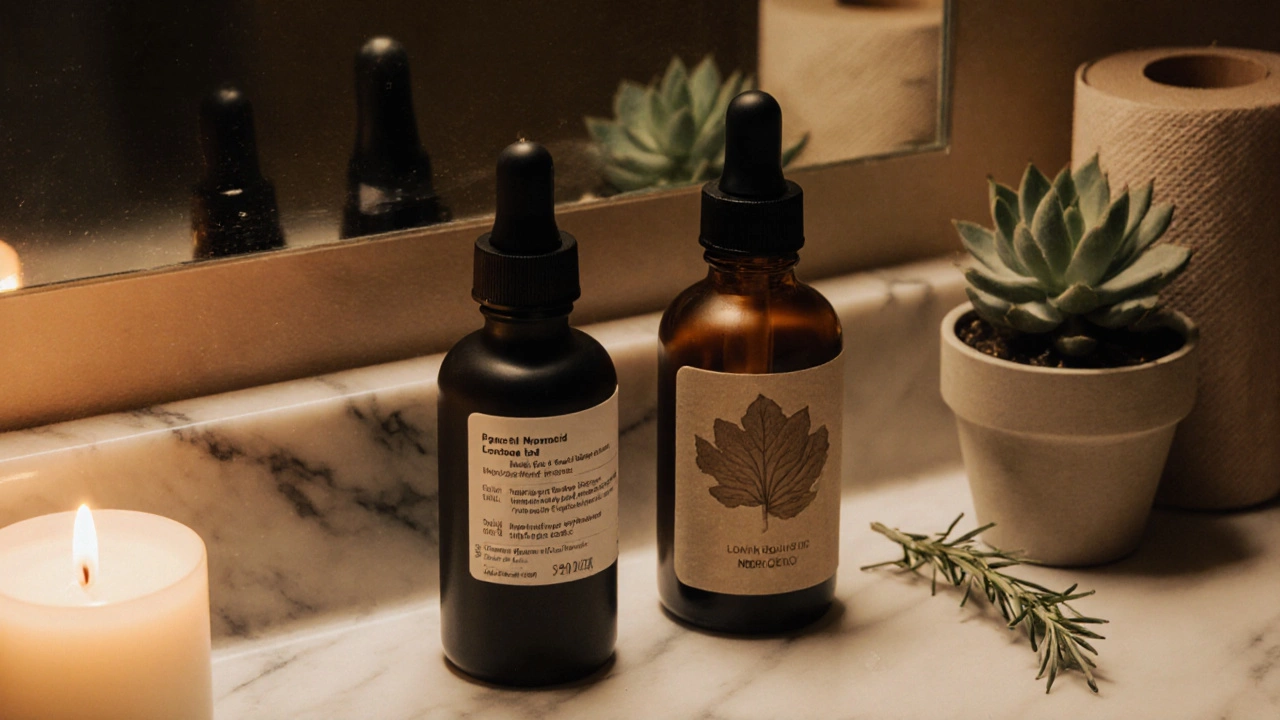Medical Grade Skincare vs Organic Skincare: Key Differences Explained
 Oct, 20 2025
Oct, 20 2025
Skincare Choice Advisor
Find Your Ideal Skincare Type
Answer a few questions to determine whether medical grade or organic skincare is better for your needs.
1. What's your primary skin concern?
2. What's your budget for a skincare product?
3. Do you have known allergies or sensitivities to certain ingredients?
4. How important is sustainability to you in skincare products?
5. Do you have a skin condition that requires medical oversight?
Medical Grade Skincare Recommendation
Based on your answers, medical grade products may be more suitable for you because:
- They contain higher concentrations of active ingredients proven to address specific concerns like acne or hyperpigmentation
- They undergo rigorous clinical testing for safety and efficacy
- They're often recommended by dermatologists for medical conditions
- They tend to have more stable formulations with longer shelf lives
Medical grade products typically range from $50-$200 for a 30-ml bottle, but may provide faster, more measurable results for targeted concerns.
Organic Skincare Recommendation
Based on your answers, organic skincare may be more suitable for you because:
- It uses plant-based ingredients that are gentler on sensitive skin
- It aligns with sustainability values by focusing on natural sourcing
- It avoids synthetic preservatives and fragrances that might cause reactions
- It often has lower price points ($15-$120) depending on certification level
Organic products typically range from $15-$120, with some certifications providing higher quality assurance for natural ingredients.
Tip: You can often combine both approaches—use a medical grade treatment in the morning and organic moisturizer in the evening for optimal results.
You’ve probably seen the terms medical grade skincare and "organic skincare" side by side on shelves, but what do they really mean? Understanding the gap between these two categories can save you money, prevent skin irritation, and help you pick products that truly match your goals.
Medical grade skincare is a class of products formulated under stricter chemical and clinical standards than typical over‑the‑counter cosmetics. They are often developed by dermatologists or pharmaceutical companies and may require a prescription or a professional recommendation before purchase. The term is not regulated by a single global agency, but many countries have clear guidelines that set these products apart from regular cosmetics.
Organic skincare refers to formulations that use ingredients grown without synthetic pesticides, fertilizers, or genetically modified organisms. Certification bodies such as the USDA‑Organic, COSMOS‑Standard, or Australia’s Australian Certified Organic verify that a minimum percentage of the product’s ingredients meet organic standards. Unlike medical grade products, the focus is on natural sourcing rather than clinical potency.
Regulation and Oversight
Regulatory frameworks are the clearest line that separates these two groups.
- FDA (U.S.) treats many medical grade creams as drugs if they claim to treat or prevent disease, meaning they must pass safety and efficacy testing before hitting shelves.
- Organic labels are governed by certification agencies, not by drug‑regulating bodies. They focus on farming practices and ingredient purity rather than on clinical outcomes.
- In the EU, the Cosmetics Regulation (EC) No 1223/2009 requires that any claim of “medical” must be supported by scientific evidence, while organic claims must be backed by a recognized organic standard.
Because the medical grade label leans on health‑related claims, the products often undergo more rigorous ingredient testing and batch‑to‑batch consistency checks.
Typical Ingredients
Ingredient profiles illustrate the philosophical divide.
- Medical grade formulas often include high concentrations of active ingredients such as retinoids, peptides, niacinamide, and hyaluronic acid. These compounds are chosen for their proven ability to affect skin biology.
- Organic skincare leans toward botanical extracts, oils, and plant‑derived antioxidants-think botanical extracts like green tea, calendula, and jojoba oil. The emphasis is on purity and sustainable farming.
- Preservatives differ, too. Medical grade products may use phenoxyethanol or parabens (despite the bad press) because they guarantee long‑term stability. Organic lines often opt for paraben-free and silicone-free formulas, relying on natural preservatives like rosemary extract.
| Attribute | Medical Grade | Organic |
|---|---|---|
| Active Concentration | 10-30% (e.g., retinol, peptides) | 1-5% (e.g., plant antioxidants) |
| Preservative Type | Phenoxyethanol, parabens | Natural extracts, ethylhexylglycerin |
| Fragrance | Often fragrance‑free for safety | Often aroma‑derived from essential oils |
Price and Accessibility
Cost reflects the level of research and the sourcing model.
- Medical grade products typically sit in the $50‑$200 range for a 30‑ml bottle because of patented actives, clinical trial expenses, and tighter manufacturing controls.
- Organic skincare can vary widely; discount‑chain brands may be $15‑$30, while boutique, ethically‑sourced lines often cost $40‑$120. The price driver here is the certification process and often smaller batch production.
- Availability also differs. Medical grade items are frequently sold through dermatology clinics, licensed spas, or specialized e‑commerce portals, whereas organic brands are stocked in health stores, supermarkets, and mainstream online marketplaces.

Efficacy, Testing, and Clinical Evidence
When you’re looking for results, the depth of testing matters.
- Clinical trials are standard for many medical grade products. A study might involve 30‑60 participants, double‑blind testing, and measurable outcomes like reduction in fine lines or decreased transepidermal water loss.
- Organic formulations often rely on in‑vitro studies or historical usage data. While many botanical ingredients have documented antioxidant benefits, the evidence is usually less quantitative.
- Consumer perception plays a role, too. Some users report “visible improvements” from organic serums, but without controlled studies it’s hard to separate placebo effect from real change.
Sustainability and Ethical Considerations
Both camps claim eco‑friendliness, but they focus on different aspects.
- Organic skincare brands typically highlight ingredient sourcing that avoids synthetic chemicals, supports fair‑trade farms, and uses recyclable packaging.
- Medical grade manufacturers may invest in sustainable manufacturing processes, but the high‑purity chemicals they use can have larger carbon footprints due to synthesis and purification steps.
- Both categories are increasingly adopting cruelty‑free policies, but it’s worth checking certifications like Leaping Bunny or PETA‑Approved.

How to Choose What’s Right for You
Picking a product isn’t a one‑size‑fits‑all decision. Consider these checkpoints:
- Skin concern: If you have acne, rosacea, or severe hyperpigmentation, a medical grade formula with proven actives may deliver faster results.
- Allergy profile: Users sensitive to synthetic preservatives often prefer organic lines that use milder, plant‑based alternatives.
- Budget: Decide whether you’re comfortable spending $150 for a clinically tested serum or if a $35 organic cream fits your routine.
- Values: If sustainability, non‑GMOs, and supporting small farms matter most, organic is the clear winner.
- Professional guidance: Consult a dermatologist when dealing with medical conditions; they can prescribe or recommend medical grade options safely.
Ultimately, the best regimen may blend both worlds-a medically formulated core treatment topped with an organic moisturizer for daily maintenance.
Common Myths Debunked
- Myth: Organic equals safer. Fact: “Organic” only guarantees farming practices, not the absence of allergens or irritants.
- Myth: Medical grade products are always more effective. Fact: Effectiveness depends on formulation, skin type, and consistency of use.
- Myth: Higher price means higher quality. Fact: Brand markup can inflate cost without adding real benefit.
Can I use medical grade products without a prescription?
Many medical grade items are sold over the counter, but some require a dermatologist’s recommendation. Check the label or ask your skin specialist.
Do organic skincare products contain fewer chemicals?
Organic formulations avoid synthetic pesticides in farming, but they may still include naturally derived chemicals like essential oil components that can be irritating for some users.
Which type is better for anti‑aging?
Medical grade serums with retinoids or peptides generally show faster, measurable improvements. Organic oils rich in antioxidants can support skin health but usually act more gently.
Is it safe to mix both product types?
Yes, as long as you layer correctly: start with the medical grade treatment (e.g., serum) and follow with an organic moisturizer. Patch‑test first to avoid reactions.
How can I verify an organic certification?
Look for badges from USDA‑Organic, COSMOS‑Standard, or other recognized bodies. Most reputable brands list a certification number that you can check on the certifier’s website.
